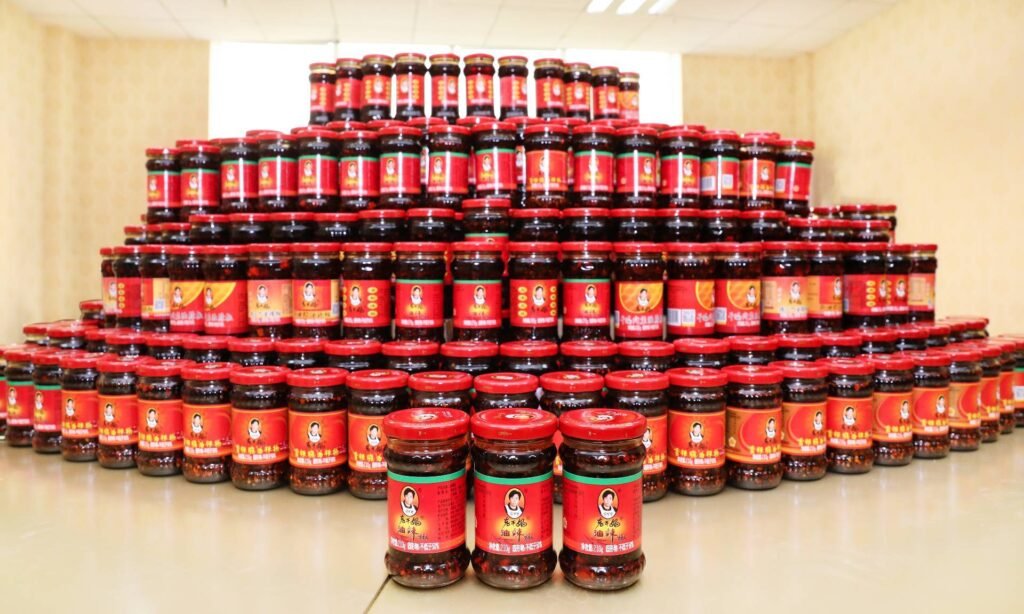
The production process of Lao Gan Ma hot sauce involves multiple process links such as raw material steaming, frying, sterilization, concentration, filling and equipment cleaning, among which a large amount of heat energy demand is mainly concentrated in the steaming, sterilization and frying stages. At the same time, these links will also generate a large amount of low-grade waste heat, such as steam condensation heat during steaming, exhaust heat after sterilization, and heat energy of cleaning wastewater. High-temperature heat pumps can not only reduce production costs, but also reduce carbon emissions by efficiently recovering these waste heat and heating them for other production processes, helping to achieve green manufacturing.
Main heat-using links in Lao Gan Ma production
- Raw material steaming
- Process: Steaming and processing of raw materials such as beans and peppers.
- Temperature requirement: Usually 90~100°C.
- Frying
- Process: Fry peppers and other condiments in high-temperature oil.
- Temperature requirement: The frying temperature is generally 160~200°C.
- Sterilization
- Process: The hot sauce after filling is sterilized at high temperature during the packaging stage.
- Temperature requirement: Usually 100~120°C is required.
- Concentration
- Process: Heat the hot sauce and concentrate it to a suitable consistency.
- Temperature requirement: Generally 80~100°C.
- Cleaning and disinfection
- Process: Cleaning and disinfection of production equipment and pipelines.
- Temperature requirement: The temperature of cleaning water is 60~90°C.
Application scenarios of high-temperature heat pumps
- Recovery of waste heat from cooking
The cooking process will emit a large amount of steam condensation heat (temperature is about 60~80°C). High-temperature heat pumps can recover this waste heat, raise it to 90~100°C, and use it again for cooking or other required heating processes.
- Utilization of sterilization condensation heat
The condensation waste heat (temperature 60~80°C) generated by the sterilization equipment is heated to 100~120°C by a high-temperature heat pump and can be used for the next batch of sterilization or concentration processes.
- Heat recovery of cleaning wastewater
The heat in the wastewater (temperature 40~60°C) discharged by the cleaning equipment can be recovered by the high-temperature heat pump and heated to 70~90°C for equipment cleaning and disinfection.
- Frying oil temperature control
The high-temperature heat pump can be used as an auxiliary equipment for the hot oil system to recover the heat lost during the frying process, maintain a constant oil temperature, and reduce fuel use.
- Comprehensive thermal energy management
The high-temperature heat pump integrates low-grade waste heat from various production links, concentrates the temperature and distributes it to the process links such as cooking, sterilization, and cleaning, to build an efficient and environmentally friendly thermal energy circulation system.
Economic and environmental benefits
- Save energy costs
- High-temperature heat pumps provide the required heat energy by recycling waste heat, replacing coal-fired boilers or gas-fired boilers, and significantly reducing energy consumption.
- The operating efficiency (COP) is as high as 3~5, and each unit of electrical energy can output 3~5 times the heat energy.
- Reduce carbon emissions
- Reducing the use of coal or gas, reducing carbon dioxide and pollutant emissions, and helping companies achieve carbon peak and carbon neutrality goals.
- Optimize production efficiency
- High-temperature heat pumps provide a stable heat supply, can accurately control process temperature, and improve product quality and production efficiency.
- Reduce operation and maintenance costs
- Compared with traditional boilers, high-temperature heat pumps have lower operation and maintenance costs and longer service life.
Case analysis
Background data:
- A hot sauce factory produces 50 tons per day.
- The steaming process requires 800 kW of heat, and the sterilization process requires 1,000 kW of heat.
- The total amount of waste heat emission (temperature 60~80°C) is 1,200 kW.
Energy consumption calculation:
- Traditional coal-fired boiler method:
- Total heat demand .
- Boiler efficiency 85%, actual coal demand .
- High-temperature heat pump method:
- Recover waste heat , and the remaining heat is provided by the high-temperature heat pump .
- The COP of the high-temperature heat pump is assumed to be 4, and the power consumption is .
Operation cost comparison:

Savings:
The cost savings per hour is , 16 hours of operation per day, 300 days of operation per year, and the annual cost savings are:
Carbon emission reduction:

The coal consumption is reduced by 1,968 kW. According to the coal carbon emission coefficient of 0.7 kg CO₂/kWh, the annual emission reduction is:

Conclusion
The application of high-temperature heat pumps in the production of Lao Gan Ma can not only efficiently recover the waste heat in the production process, but also meet the heat energy requirements of processes such as steaming, sterilization and cleaning, greatly reducing energy costs and carbon emissions, and helping enterprises achieve green and efficient production. At the same time, the heat output of high-temperature heat pumps is stable and controllable, which can improve the accuracy of the production process and product quality. It is an ideal solution for energy saving and consumption reduction in the field of hot sauce production.

